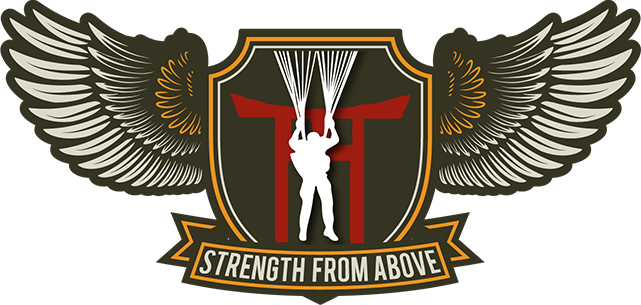T/Sgt. Steele, Robert C.
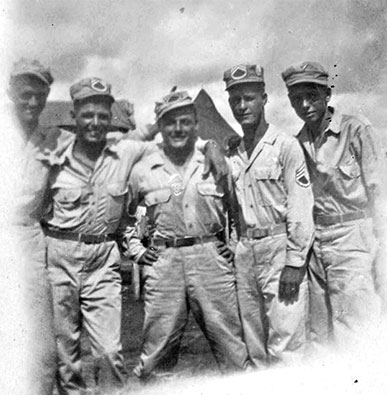
Platoon Sergeant - 3rd Platoon - Acting Platoon Leader, D Company, 511th PIR
1923 - February 8, 1945 (Age 22) - Gravesite - from Salpulpa, Oklahoma & Los Angeles, California
Citations: Distinguished Service Cross, Combat Infantryman Badge (CIB), Bronze Star, Purple Heart
Robert C. Steele (SSN 20904839) was born in Salpulpa, Oklahoma to Walter Allie and Clara Fay Wilkins Steele. Robert and his family spent several years in Oklahoma where his father Walter was a railroad conductor, but Walter took his two sons to a rental home on 2309 W. 54th Street in Los Angeles, California by 1930 for $16 a month. Walter worked as an electrician for the W.P.A. while 18-year-old Robert entered college in L.A. while working as a gardeners / grounds keeper for local parks, cemeteries, etc.
On March 31, 1941, the 135-pound. 5' 10" Bob enlisted in the National Guard where he was promoted to Corporal. Sometime that year, Bob returned to Oklahoma City to attend Oklahoma City University as a sophomore.
Sometime between his entering college and January of 1943, Bob entered full-time service in the United States Army. We know that he joined the 511th Parachute Infantry Regiment at Camp Toccoa, Georgia where Bob was assigned to Company D under Captain Lyman S. Faulkner. Robert was a highly-popular Sergeant in Company D, and while tough, his fellow paratroopers came to respect him deeply.
Bob and the 511th PIR soon moved to Camp Mackall, North Carolina in March of 1943 before heading to Fort Benning, Georgia for Jump School. After earning his "Silver Badge of Courage", Bob and D Company headed back to Camp Mackall for additional training as part of the 11th Airborne Division. The 11th AB took part in the historic Knollwood Maneuvers that December. After New Years, the 11th AB closed on Camp Polk, Louisiana to undergo extensive training and final exams from the War Department. Bob and the regiment then boarded trains on April 20, 1944 for Camp Stoneman, California just outside Pittsburgh. There Colonel Orin D. "Hard Rock" Haugen kept his men busy with preparations to disembark for the Pacific Theater which they did on May 2 aboard the SS Sea Pike (a vessel they call came to hate over the next three weeks).
Arriving at Dobodura, New Guinea on May 28, 1944, Bob and the 511th PIR would spend the next sixth months in intense theater training and acclimatization during which Bob and his buddies would learn how to fight and survive in the Pacific's jungles and mountains. On November 18, Colonel Haugen's Angels landed on Leyte and headed into what has often been called "The Green Hell."
As one of the 511th's paratroopers said years later, "After Leyte, Hell was a vacation."
During one of their many bloody engagements over the next 33 days with the enemy, D Company's Corporal William R. Walter recounted that he, now-Sergeant Bob Steele and SGT Murray Perlman found themselves alone and surrounded in a river bottom. Steele noticed Perlman’s untied shoelaces and calmly said, "Hey, Murray, you are going to trip and fall."
With Japanese prowling in the surrounding jungle, SGT Steele knelt in the water and laced up his comrade’s boots.
"That was so impressive to me," CPL Walter remembered. "A man of his stature and how he handled himself was one of the things that intrigued me about him."
After 33 days of monsoon rains, hunger, thirst and close quarters combat, Bob and his buddies in the 511th PIR had eliminated the main enemy supply line on Leyte, plus 5,760 of the enemy. The hells of Leyte brought the men (the survivors at least) of the 511th PIR close. As my grandfather 1LT Andrew Carrico of Company D said decades after the 511th's came down from Leyte's mountains on Christmas Day of 1944, "There is a feeling of closeness and love for your fellow men in combat that is different from any other feeling that you can have."
But that bond can be a double-edged sword. As Tonawanda, New York’s LT John Ringler of B Company fame summed it up best when he said, "You never leave your buddies; they were as much of you as you were yourself. And I think that personal feeling carried you through when you lost one. It was devastating."
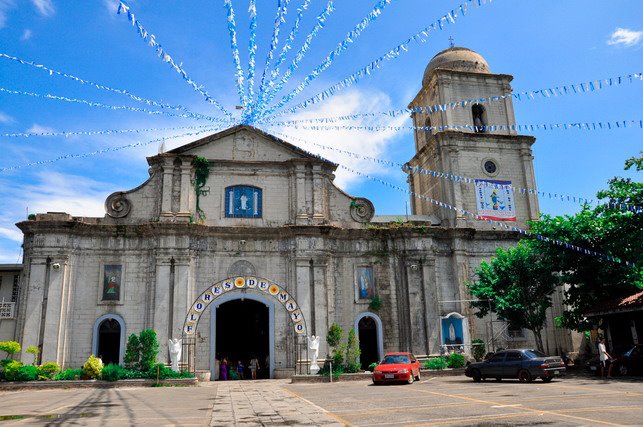 Such a devastating loss occurred on Luzon on February 8, 1945, only six days after Bob and the 511th had landed on Tagaytay Ridge south of Manila and only four days after Bob earned a Distinguished Service Cross during a battle with a Japanese garrison at Imus. After Captain Stephen E. Cavanaugh ordered D Company's 1st and 2nd Platoons to charge across an open courtyard (through small arms, mortars and machine gun fire) to assault the main enemy stronghold blocking a bridge across the Imus River, the young paratroopers eliminated over 60 of the defenders.
Such a devastating loss occurred on Luzon on February 8, 1945, only six days after Bob and the 511th had landed on Tagaytay Ridge south of Manila and only four days after Bob earned a Distinguished Service Cross during a battle with a Japanese garrison at Imus. After Captain Stephen E. Cavanaugh ordered D Company's 1st and 2nd Platoons to charge across an open courtyard (through small arms, mortars and machine gun fire) to assault the main enemy stronghold blocking a bridge across the Imus River, the young paratroopers eliminated over 60 of the defenders.
3rd Platoon, which had arrived, was charged with clearing the thick-stone church (now the Diocesan Shrine and Cathedral of Our Lady of the Pillar) which 1LT Robert J. Watkins reported was done, but several enemy opened up from a top floor room, inflicting several casualties on D Company as 3rd Platoon ran for whatever cover they could find.
2nd Platoon covered their movement and after leadership failures on the part of the platoon leader 1LT Watkins, T/SGT Robert C. Steele and SGT Sheldon Wafer decided it was time to eliminate the final Japanese defenders (Cavanaugh relieved Watkins the next day and had Steele take over).
Calling for covering fire, Steele and Wafer dashed through the enemy fire towards the stone building then climbed up the building’s side (where the Japanese couldn't fire on them). Reaching the top, Robert and Wafer began tearing a hole through the roof (some accounts say they found an existing one), then shouted to LT Watkins to bring them gasoline.
"(Bob Steele) poured gasoline through the hole, then ignited it, and the enemy, with a white phosphorous grenade," Grandpa/1LT Carrico said. "When the enemy rushed out, 2nd Platoon mowed them down."
Steele then dropped to the ground, peered into the building and dispatched two enemy soldiers hiding inside, bringing his tally (inside the building) to 24. By now, General Robert L. Eichelberger, commander of Eighth Army, had arrived in a jeep with his G-3 COL Frank S. Bowen and aide SGT Clyd Shuck. The trio huddled behind the enclosure’s wall for protection where they observed Steele’s (and D Company's) actions which earned Bob the Distinguished Service Cross. After relieving LT Watkins, CPT Cavanaugh put Bob in for a battlefield promotion, but sadly, as I mentioned earlier, disaster struck D Company only a few days later.
2nd Battalion's MAJ “Hacksaw” Holcombe (who was recommended for a promotion to Lieutenant Colonel on February 7) ordered D Company to scout enemy positions west of Nichols Field. CPT Stephen E. Cavanaugh sent a patrol led by Acting Platoon Leader T/SGT Robert C. Steele who had climbed the stone building at Imus to burn out the Japanese just four days earlier.
Steele's patrol found the enemy about an hour later. In fact, the Angels reported hearing the enemy all around them and when the Japanese began firing, PFC Billy Pettit remembers watching T/SGT Steele calmly peak over a wall to fire back when Robert was promptly shot in the head. The remaining D Company men, knowing that Bob was clearly dead, beat a hasty retreat back to the company lines to report to CPT Cavanaugh.
As one of the 511th’s original Toccoa Men, SGT Steele’s loss was felt by all in D Company (and across 2nd Battalion), especially his good friend CPL William R. Walter who was in the hospital for dysentery when he got the news. Willie cried freely for his lost buddy.
"Steele had been in the service before, overseas in Hawaii," he said. "And he just knew how to do everything. In Leyte he and I were pup tent buddies. We laid there at night discussing what we were going to do when we got out of the service. I came to admire him so much. He was the kind of man that everybody would like to be."
"Bob Steele, I think, was the best soldier I ever knew," Walter added fondly. "It really shook me up. It was one of the worst things that happened to me in the service, losing a buddy like that."
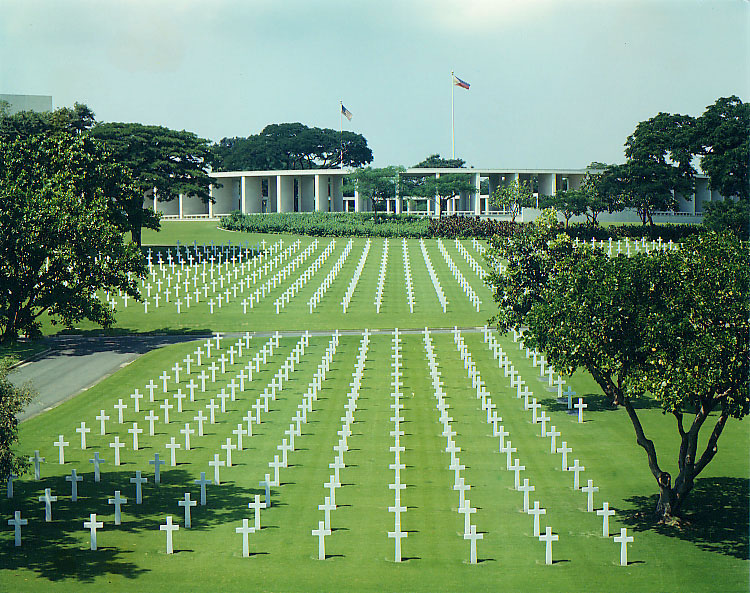 "The loss of Sgt. Steele was a blow to all of us," CPT Stephen Cavanaugh added. "Because not only was he a fine leader, he was well liked and respected."
"The loss of Sgt. Steele was a blow to all of us," CPT Stephen Cavanaugh added. "Because not only was he a fine leader, he was well liked and respected."
"Sgt. Steele was a tough soldier and a great guy," noted S/Sgt. Wilbur Wilcox. "He gave his life for what he believed in."
Robert C. Steele was temporarily buried at the USAF Cemetery, Manila #2 (7747) before his body was moved permanently to the Fort McKinley Cemetery (7701) located on the very grounds Bob's buddies helped reclaim from the enemy ten days after his death. Now named the Manila American Cemetery, these sacred grounds host Bob's mortal remains as well as over 17,000 soldiers, sailors and airmen who, like Bob, gave the ultimate sacrifice.
When I think of all the young 511th PIR paratroopers like Bob who rest there and in cemeteries across the nation, I echo the words of the 511th's Chaplain Lee Walker who said, " "
Bob's Distinguished Service Cross citation:
GENERAL ORDERS:
Headquarters, U.S. Forces-Pacific, General Orders No. 41 (1945)
CITATION:
The President of the United States of America, authorized by Act of Congress July 9, 1918, takes pride in presenting the Distinguished Service Cross (Posthumously) to Technical Sergeant Robert C. Steele (ASN: 20904839), United States Army, for extraordinary heroism in connection with military operations against an armed enemy while serving with the 511th Parachute Infantry Regiment, 11th Airborne Division, in action against enemy forces on 5 February 1945. Technical Sergeant Steele's intrepid actions, personal bravery and zealous devotion to duty at the cost of his life, exemplify the highest traditions of the military forces of the United States and reflect great credit upon himself, the 11th Airborne Division, and the United States Army.
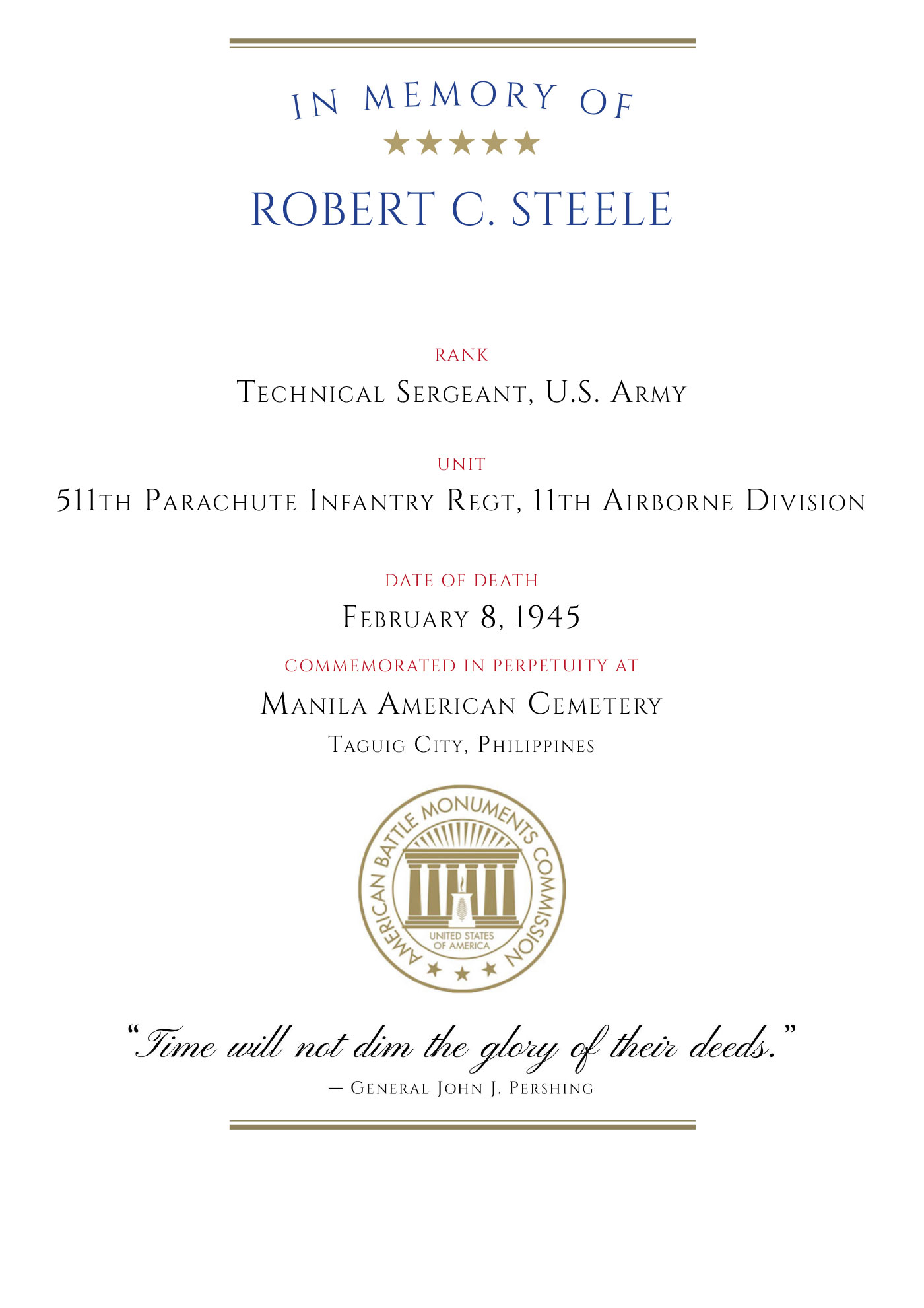
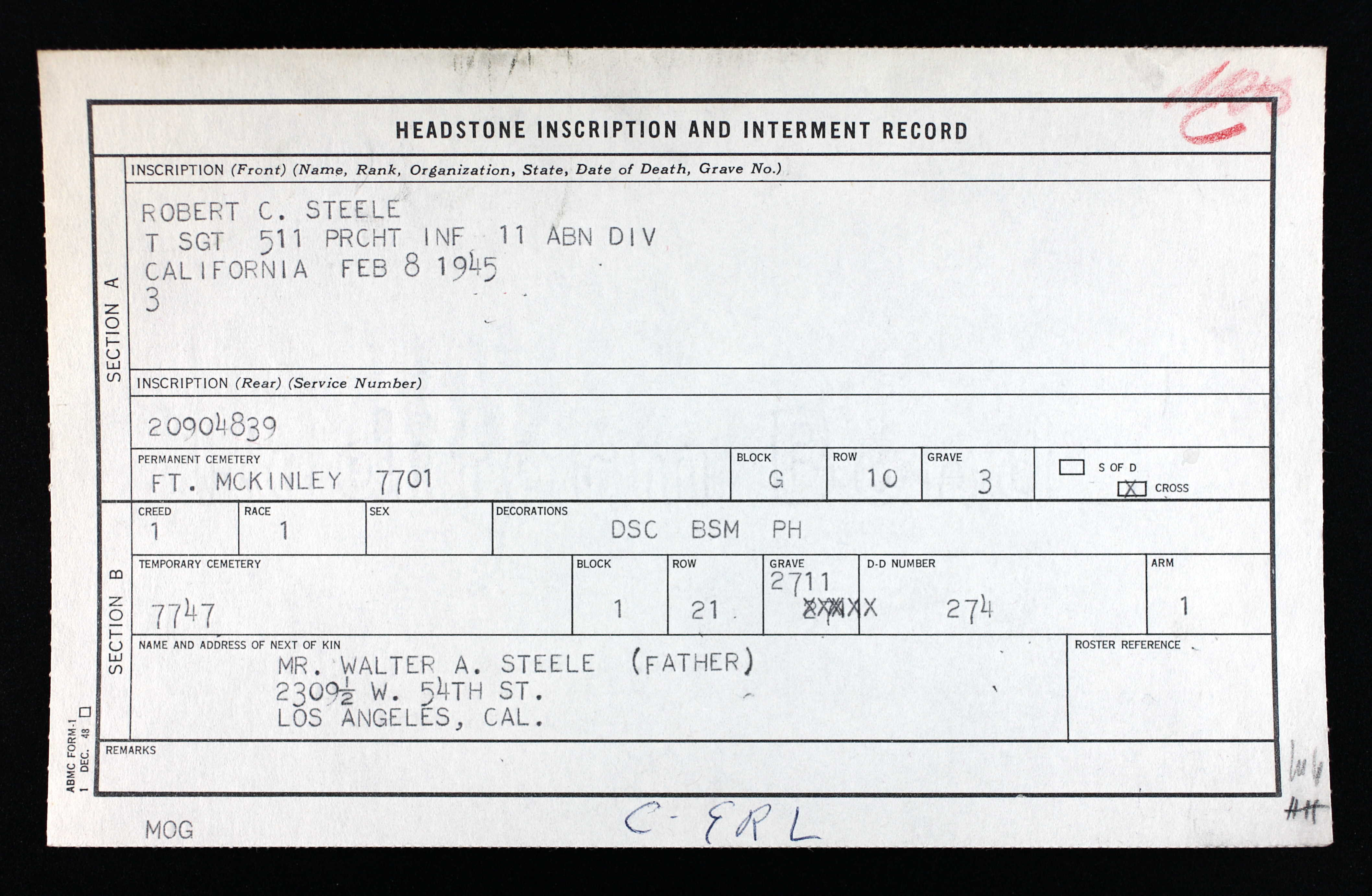
To learn more about the 11th Airborne Division in World War II, please consider purchasing a copy of our books on the Angels:
